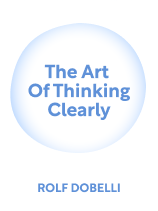

This article is an excerpt from the Shortform book guide to "The Art of Thinking Clearly" by Rolf Dobelli. Shortform has the world's best summaries and analyses of books you should be reading.
Like this article? Sign up for a free trial here .
What is ambiguity aversion bias? Why do people go to such great lengths to avoid ambiguity?
Ambiguity aversion bias is the root of the adage “better the devil you know.” Even if the situation is bad, you’d rather stay than face the uncertainty of leaving.
Here’s why we go to such great lengths to avoid uncertainty.
Ambiguity Aversion
Ambiguity aversion bias is the human tendency to dislike uncertainty. Humans would go to great lengths to avoid uncertainty. For example, say you’re stuck in a job you hate and are offered a new job in a field you know nothing about but might like—you’re not quite sure. Despite not enjoying your current job, you’ll probably choose to stay: Your fear of uncertainty over the new job makes you choose the unhappiness you know.
Uncertainty is a lack of concrete facts about an outcome. For early humans, lacking facts was deadly: If you didn’t know which plants were edible or where predators lived, you died. Thus, humans evolved to avoid uncertainty.
However, uncertainty is very prevalent and thus unavoidable in modern society. While the ideal approach to this rampant uncertainty would be to learn to accept and work with it, Dobelli argues, this is near impossible: Your tolerance for uncertainty is pre-determined by how your amygdala, which processes emotions, forms. (Shortform note: Dobelli claims uncertainty resilience is biologically determined. However, others argue that you can increase resilience through “flooding,” during which you expose yourself to increasing amounts of uncertainty. After the initial exposure period, your brain becomes bored with the uncertainty and accepts it.)

———End of Preview———
Like what you just read? Read the rest of the world's best book summary and analysis of Rolf Dobelli's "The Art of Thinking Clearly" at Shortform .
Here's what you'll find in our full The Art of Thinking Clearly summary :
- A detailed look at the most common logical fallacies that inhibit decision-making
- How to recognize and overcome these fallacies to make better decisions
- Why you value things for arbitrary reasons






